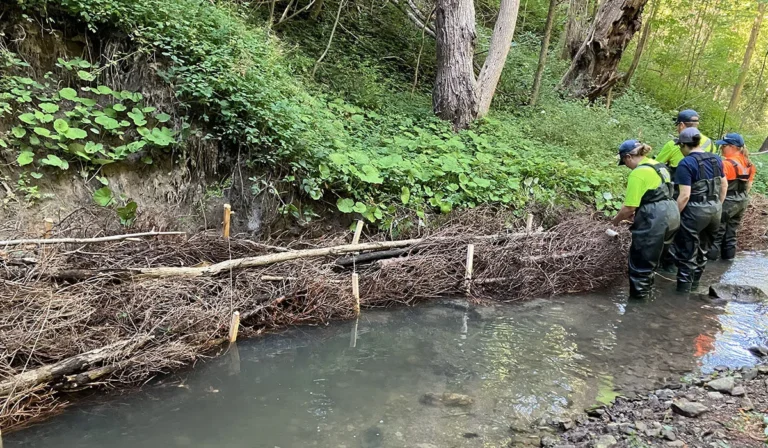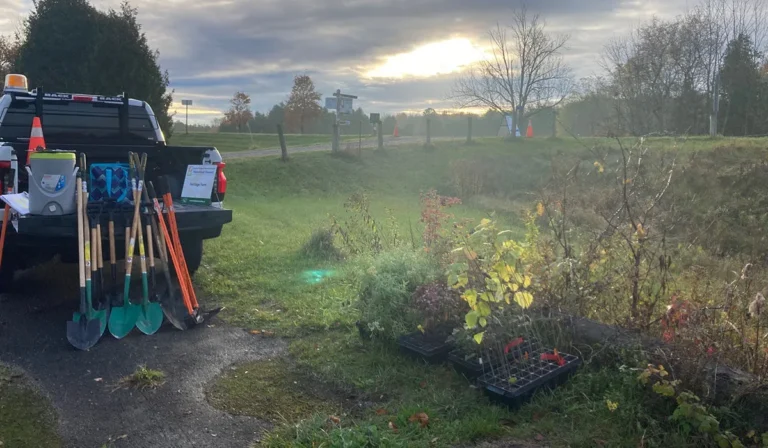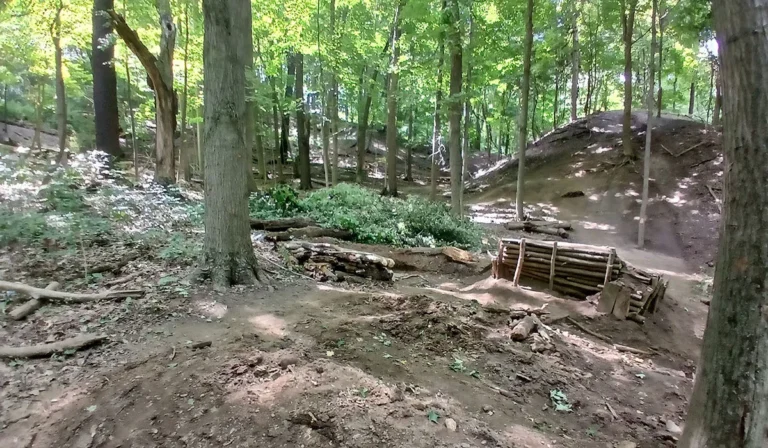A Closer Look at Hemlock Woolly Adelgid
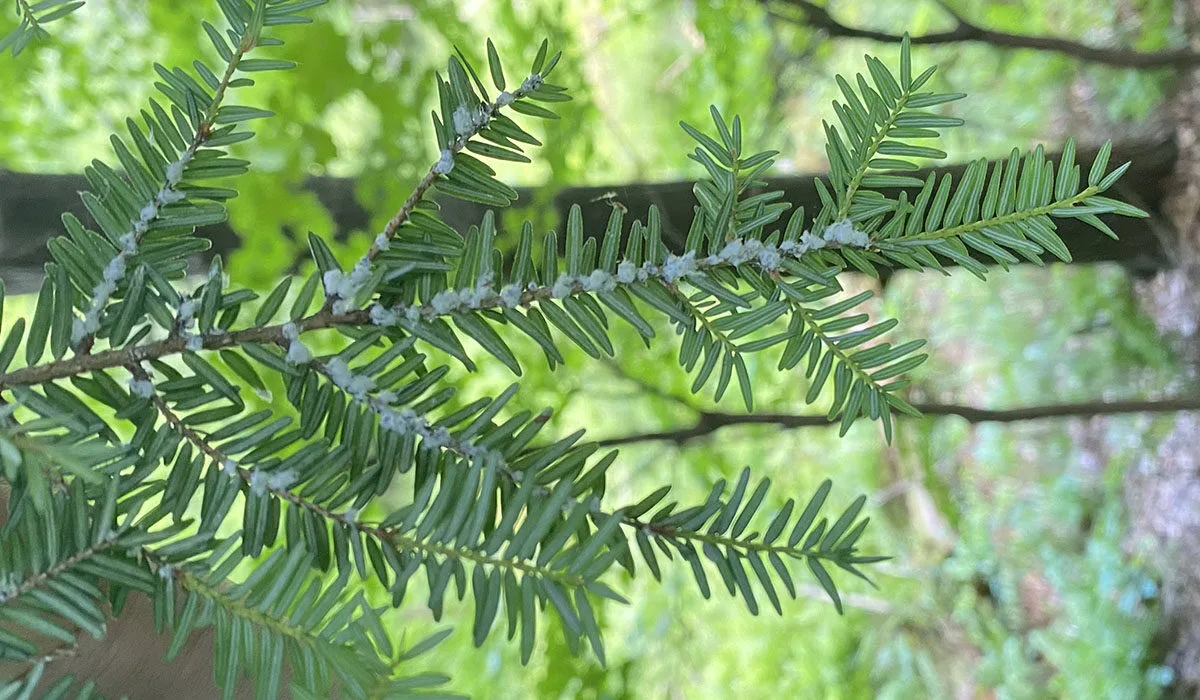
A Closer Look at Hemlock Woolly Adelgid: What to Know and What You Can Do
If you enjoy hiking through shaded trails or walking beneath the towering eastern hemlocks in places like Dundas Valley, there’s an insect you should know about: the Hemlock Woolly Adelgid, or HWA for short.
This tiny insect, recently found in Hamilton, could trouble our local hemlock trees. But with your help, we can slow its spread and protect the places we love.
What is HWA?
HWA is an aphid-like insect that feeds on the sap stored at the base of hemlock needles. Over time, this feeding weakens the tree, causing it to lose needles, dry out at the tips, and eventually die if the infestation is left untreated.
The insect likely arrived in North America from Japan in the 1950s and has been slowly spreading ever since, likely through the horticultural or timber industries. It was first found in Hamilton at the Royal Botanical Gardens in 2023 and more recently on Hamilton Conservation Authority (HCA) lands in May 2025.
What to Look For
In spring and winter, keep an eye out for:
- Tiny white, woolly sacs at the base of the needles on small twigs (they look like cotton swab tips)
- Needle loss or thinning branches
- Grey-green foliage instead of the usual deep green
- Dead twigs or dieback
If you see any of these signs on a hemlock tree, especially the white sacs, it could be HWA.

Why it Matters
Hemlocks play an important role in local ecosystems. They help keep stream temperatures cool, support wildlife, and hold soil in place on steep hillsides. While HWA can harm these trees, early detection and careful management can help reduce its impact.
That’s why spotting it early and reporting it makes a big difference.
What Happens When You Report HWA?
When you report a sighting, it’s not just a note in a file. Experts review your report, assess the infestation, and take action if needed. Your report helps track the spread of HWA and can trigger monitoring, research, or treatment efforts.
One of the easiest way to report sightings is through iNaturalist, a free app used across Canada to track invasive species. Simply upload a photo and location, and experts can confirm if it’s HWA. Your submission becomes part of a growing database that helps conservation staff take action.
You can also report through:
- The Canadian Food Inspection Agency at inspection.canada.ca/pests
- The Invasive Species Centre’s tools, including apps like EDDMapS
Help Prevent the Spread
If you’ve been hiking in an area where HWA is present:
- Use a lint roller on your clothing and pets
- Wash your clothes and gear before visiting another forest
- Avoid moving branches, needles or firewood
- Stay informed and share what you know
What’s Being Done Locally
HCA staff are actively monitoring forests in the Dundas Valley with help from the Canadian Food Inspection Agency. Thanks to funding support from the Invasive Species Action Fund from the Invasive Species Centre, a detailed HWA management plan is underway, and trained staff are surveying high-risk areas while educating other teams about prevention and identification. So far, HWA has been detected in the Lower Spencer Creek area and the Dundas Valley Conservation Area.
HWA is a regulated pest in Canada, so any detections are reported to federal officials who determine next steps. This may include restrictions on moving plant materials, extra inspections, or other protective measures.
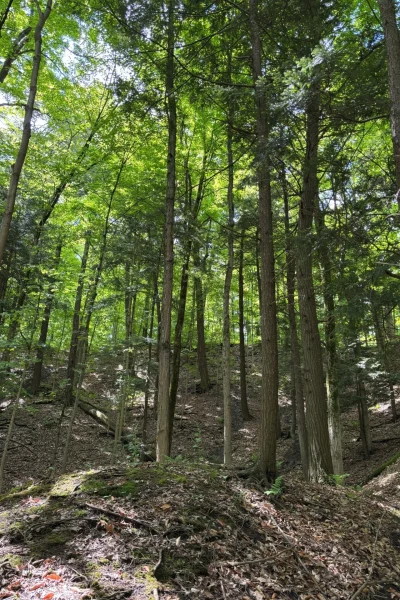
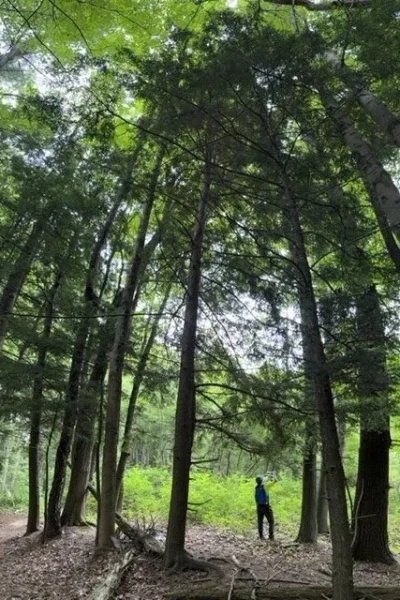
Stay Aware, Stay Involved
Hemlock woolly adelgid poses a serious threat to our forests, but with early detection and community action, we can help slow its spread. By staying informed and reporting sightings, we all protect local ecosystems and the species that rely on them.
Have you seen something suspicious on a hemlock tree? Snap a photo and report it using iNaturalist. Your observation could help protect forests across southern Ontario.

HCA Contact Information
Phone: 905-525-2181
Email: nature@conservationhamilton.ca

